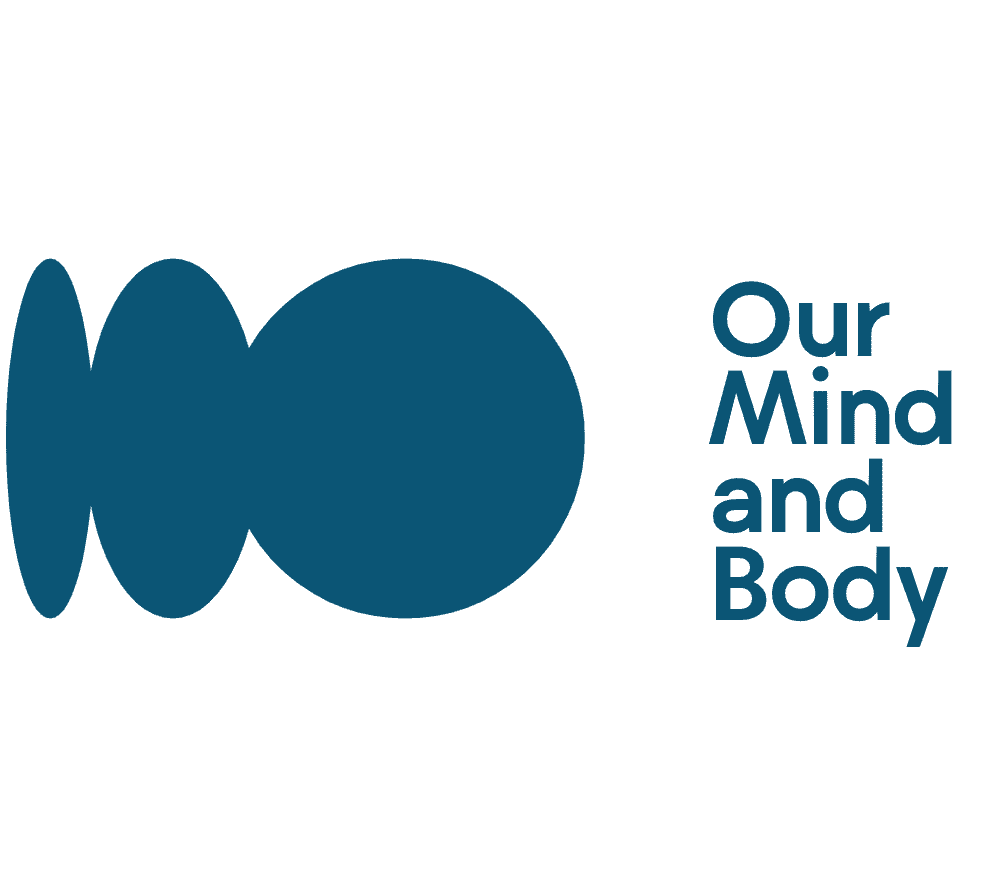Personal Growth
Unlocking the Power of Dopamine: How It Impacts Your Mental Health and Happiness

Have you ever heard of dopamine? It is a potent neurotransmitter, a chemical messenger that is crucial in the brain’s reward system. It is not just a hormone or a feeling, dopamine is truly transformative! It plays a key role in regulating our moods, emotions, and behaviors; it provides us with the energy we need to tackle the day; it aids in memory formation, decision-making, and concentration; and most importantly, it helps maintain balance in our body’s chemistry.
Dopamine works as part of a larger network of hormones and chemicals in the brain. When released into the body at appropriate levels, dopamine can bring about feelings of happiness, pleasure and contentment. When too little dopamine is produced or when there is an imbalance between other hormones such as serotonin or cortisol, this can lead to symptoms like depression, anxiety or difficulty focusing.
Understanding how dopamine impacts our lives can be incredibly valuable for maintaining good mental health. We will explore this further by looking at some of the amazing benefits associated with releasing dopamine naturally through exercise.
Benefits Of Dopamine Release
We all want to feel better, both mentally and physically. Luckily, one of the most powerful tools at our disposal is dopamine release. It has a variety of benefits that can help us cope with life’s challenges in an effective way.
When we release dopamine, it helps regulate our emotions and improves our mental health. We become more productive and creative, while reducing stress levels as well. This means we’re better equipped to handle difficult situations without feeling overwhelmed or anxious. Plus, having higher levels of dopamine can make us more resilient when facing tough times head-on.
Dopamine also gives us a sense of satisfaction when tasks are completed successfully, which helps create a positive feedback loop for motivation and productivity. Additionally, this neurotransmitter plays an important role in maintaining emotional balance by providing calming effects during times of distress or anxiety. By using coping strategies such as deep breathing exercises or mindful meditation to increase dopamine levels, we can gain greater control over our emotions and reactions to challenging situations.
The key takeaway here is that understanding how to tap into the power of dopamine can give us valuable insights on how to effectively manage stress and improve overall mental health outcomes. With these tangible benefits in mind, let’s explore further how exercise impacts dopamine levels…
Impact Of Exercise On Dopamine Levels
Exercising can be a powerful way to boost mental health by releasing dopamine, the chemical in our brain that helps us feel good. Research shows that even short bouts of exercise can have an immediate impact on dopamine levels and help relieve stress. So if you’re feeling down or overwhelmed with life’s challenges, it’s time to hit the gym!
Studies indicate that different types of exercise may affect dopamine differently. For example, running stimulates more of an intense release than activities like yoga. This means your workout routine is important when trying to tap into this natural mood-booster. Incorporating both aerobic exercises as well as strength training into your regimen can give you the best results for increasing your dopamine levels.
It’s also helpful to remember that consistency matters when it comes to exercising for better mental health. Aiming for around 30 minutes of physical activity each day will not only help increase dopamine but also reduce cortisol—the hormone associated with stress—in the body. With regular practice, you’ll start to notice positive changes in how you cope with life’s challenges and begin to experience increased energy and improved focus throughout the day.
The benefits of making exercise part of our daily lives are undeniable; from improving overall wellbeing to helping build resilience against tough times ahead. Taking just a few moments out of every day dedicated towards movement goes a long way in providing relief from any blues we might face due to life’s hardships – so make sure you get up and move today!
Benefits Of Exercise For Mental Health
Exercising can be a great way to boost your mental health. It has been proven to have positive effects on both our physical and emotional well-being, with numerous studies showing that regular exercise can help improve our overall moods and emotions. Not only does it promote better physical fitness, but it also helps support an improved sense of mental stability and emotional stability.
When we exercise, the body releases endorphins which provide us with a feeling of euphoria. This not only supports our mental health benefits, but it also encourages us to keep going in order to maintain this state of wellbeing. Additionally, exercising is known for its ability to reduce stress levels as it helps lower cortisol levels in the body. Cortisol is responsible for inducing feelings such as anxiety or restlessness, so by reducing these hormones through exercise our bodies become more relaxed and at ease throughout the day.
Finally, regular physical activity has been linked to higher levels of dopamine production in the brain – dopamine being one of the main neurotransmitters associated with motivation and pleasure. By releasing these chemicals into our systems through exercise, we are able to feel more energized and motivated while simultaneously reaping all the other mental health benefits mentioned above. Going forward, let’s look at how we can further increase dopamine release through exercise!
How To Increase Dopamine Release Through Exercise
The power of physical activity is undeniable. Imagine a river that flows steadily, carrying with it an abundance of life-giving energy. That’s what exercise can do for your dopamine levels—it can give you the boost you need to combat depression and anxiety while improving overall mental health.
Exercise releases endorphins, which are natural chemicals in the brain associated with happiness. It also helps increase production of serotonin, another neurotransmitter responsible for regulating moods as well as sleep and appetite cycle. But perhaps most importantly, it increases dopamine release—the neurotransmitter linked to motivation and reward processing. When we engage in physical activities, our brains get flooded with dopamine, leaving us feeling energized and more able to cope life’s challenges.
By incorporating 30 minutes of aerobic exercise into your daily routine, such as running or biking, you can reduce stress hormones like cortisol while simultaneously increasing feel-good hormones like serotonin and endorphins. Going out for a walk and breathing in fresh air can help clear your mind so that you can focus on positive solutions instead of ruminating on negative thoughts caused by too much cortisol in the body. Lastly, engaging in strength training exercises will not only make you stronger physically but also mentally; this type of exercise has been shown to increase concentration levels among people suffering from ADHD symptoms due to increased dopamine production.
With regular exercise comes improved mental wellbeing through higher dopamine levels leading to better coping skills when faced with difficult situations. So take some time each day to tap into that river of energy flowing within you and experience its ability to bring forth resilience during challenging times.
Tips For Incorporating Exercise Into Daily Life
Exercise is an important part of our daily lives, as it helps us to cope with life’s challenges. It can be a great way to banish the blues and get your daily dose of dopamine. However, many people find it difficult to incorporate exercise into their day-to-day lives. Here are some tips for making physical activity a regular part of your routine:
First, set realistic goals for yourself when creating your daily exercise plan. Choose activities that you enjoy doing and that fit within your lifestyle – this will make them easier to stick with in the long run. You may also want to consider joining a gym or fitness class if you need extra motivation.
Second, aim for consistency in order to stay active on a regular basis. This means setting aside time each day (even just 10 minutes!) for some form of physical activity. Start small and gradually increase the length and intensity of your workouts over time in order to avoid burnout.
Finally, remember that exercise doesn’t have to be boring! There are plenty of fun ways to keep yourself moving such as dancing, playing sports or going on walks outdoors. Find something that works best for you and don’t forget to reward yourself once you reach one of your goals – this could be anything from buying new workout clothes or treating yourself with a healthy snack after completing an intense session at the gym.
With these tips, we hope you feel more confident about incorporating physical activity into your daily life – because staying active has so many benefits both physically and mentally! Transitioning now into emotional challenges and how they can be coped with…
Emotional Challenges And How To Cope With Them
Emotional challenges can be an overwhelming and sometimes debilitating part of life. It’s important to remember that no one is immune from feeling overwhelmed or stressed at times, and it’s equally important to develop emotional resilience in order to cope with them. Whether the challenge is related to a mental health issue such as anxiety or depression, or simply just dealing with everyday stressors, here are some effective strategies for managing your emotions and building emotional resilience.
The first step for developing emotional resilience is recognizing when you’re feeling overwhelmed. Learning how to identify signs of distress—such as changes in mood, difficulty concentrating, restlessness, irritability—can help you better understand what triggers these feelings so that you can respond appropriately. Once identified, it’s essential to take action: practice deep breathing exercises for quick relief; create a positive mindset by focusing on things that bring joy; use relaxation techniques like yoga or meditation; reach out to support systems like friends or family members who can provide understanding and comfort. Doing any combination of these activities will help reduce stress levels while also helping build self-confidence and inner strength.
In addition to employing coping strategies while facing difficult situations, another key element of emotional resilience involves learning how to regulate your own emotions through mindfulness practices. When we become aware of our thoughts and feelings without judgment or criticism we are able to recognize patterns which may be causing us distress and choose healthier responses instead of letting our negative emotions take hold. Mindfulness helps us stay present in the moment rather than ruminating about past events or worrying about future outcomes. With this awareness comes clarity, allowing us to more effectively manage stress-invoking scenarios because we’re better equipped with the tools needed to navigate challenging moments with greater ease.
By taking the necessary steps towards becoming emotionally resilient we can learn how to face adversity head on while still protecting ourselves from being consumed by negativity and despair. This isn’t always easy but if done correctly it has immense rewards including improved relationship dynamics both internally (with yourself) and externally (with others). Developing emotional resilience gives us the power not only survive tough times but thrive during them as well – a valuable skill set applicable across all facets of life! Transforming into someone capable of tackling even the greatest obstacles provides us with an evergreen source of strength that allows us move forward confidently each day knowing that whatever lies ahead will surely be met with courage and grace.
Stress Management Strategies
According to the World Health Organization (WHO), stress affects an estimated 3 out of 4 people globally. It’s difficult to manage, but finding ways to cope with stressful situations is essential for our mental wellbeing. Here are some strategies that can help us manage stress:
- Mindfulness – Practicing mindfulness helps us become aware of our thoughts and feelings in a non-judgmental way, allowing us to better control them so they don’t overwhelm us. Examples include meditation, yoga, tai chi or even deep breathing exercises.
- Reframing Negative Thoughts – When we start thinking negatively about ourselves or our situation, it’s important to take time to reframe those thoughts and look at them from different perspectives. This will help shift your mindset and allow you to take more proactive approaches towards managing your stress levels.
- Journaling – Writing down how we’re feeling in a journal can be beneficial as it gives us an outlet for expressing our emotions without bottling them up inside. We can also use this opportunity to reflect on lessons learned from past experiences and develop new coping mechanisms for the future.
These stress management strategies provide invaluable tools for helping us stay resilient under pressure and maintain good mental health over time. By understanding what triggers our anxiety, being mindful of our thought processes and using creative outlets such as journaling –we equip ourselves with the skills needed to build mental strength when faced with life’s challenges. Moving forward into practical ways to improve mental wellbeing requires an open mind while committing oneself to taking actionable steps that make one feel empowered!
Practical Ways To Improve Mental Wellbeing
Taking care of your mental wellbeing is essential for living a healthy, balanced life. There are many practical ways to improve mental wellbeing and cultivate an overall sense of contentment and satisfaction with life. Self-care activities such as taking time out for yourself, engaging in physical activity, connecting with nature, and developing meaningful relationships can all be helpful. Additionally, there are various mental health strategies you can use to reduce stress levels, manage difficult emotions, and cope with challenging situations.
To help get started on the path towards improved mental health and wellbeing, here are some tips: First, take note of how you’re feeling each day by journaling or checking in with yourself mentally. This will allow you to identify patterns or triggers that could be affecting your moods or behaviors. Second, practice mindfulness techniques like deep breathing exercises which can help alleviate feelings of anxiety or worry. Thirdly, make sure that you engage in regular self-care activities such as getting enough sleep and eating nutritious meals throughout the day. Finally, reach out for support when needed from friends or family members who may have valuable insight into your situation.
By implementing these simple but effective mental health tips into our daily routine we can begin to experience greater levels of positivity and joy in our lives. Taking small steps now towards better personal wellbeing sets us up for more long-lasting solutions down the road – helping us banish the blue once and for all!
Long-Term Solution For Banish The Blue
Are you looking for a long-term solution to banish the blue? If yes, then exercise is your answer. Exercise has numerous mental health benefits such as reducing stress levels and increasing dopamine levels that help people cope with life’s challenges.
When it comes to maintaining good mental wellbeing on a regular basis, exercise should be at the top of your list. It not only increases endorphins which are responsible for making us feel happy but also reduces cortisol – our body’s primary stress hormone. Additionally, by exercising regularly, we can increase our level of energy throughout the day so that we don’t struggle to get through tasks or become overwhelmed when facing difficult situations.
| Benefits | When | How |
|---|---|---|
| Reduce Stress Levels | Regularly | Walking/Running |
| Increase Dopamine Levels | Throughout The Day | Yoga/Meditation |
| Feel Happier | Immediately After Exercise | Resistance Training |
Exercise is a great way to take control of our lives and manage our emotions in healthy ways. Not only does it provide an effective outlet for managing stress but it also helps boost self-confidence and make us more resilient against negative thoughts and feelings associated with depression and anxiety. Furthermore, engaging in physical activity provides social interaction opportunities which can further enhance psychological wellbeing over time. So if you want to banish the blues from your life permanently, make sure you include exercise as part of your daily routine!
Frequently Asked Questions
What Are The Side Effects Of Increased Dopamine Levels?
When it comes to the side effects of increased dopamine levels, there are a few things to consider. Dopamine is an important neurotransmitter in our bodies responsible for regulating reward-motivated behavior and pleasure responses. When dopamine production or release is heightened, it can lead to both positive and negative outcomes.
The biggest potential benefit from increased dopamine levels is associated with improved moods, focus, concentration and motivation. This can be beneficial in terms of productivity and general wellbeing when done in moderation. On the other hand, if you experience too much of a dopamine rush over time, it can result in restlessness, irritability and anxiousness which could have detrimental impacts on your mental health.
In addition, overproduction of the hormone could lead to impulse control issues as well as compulsive behaviors like overeating or gambling addiction. It’s also possible that excessive dopamine release might cause hallucinations or paranoia due to its powerful effect on the brain’s chemical balance. As such, maintaining healthy lifestyle habits that promote balanced dopamine levels is key for optimal mental wellness.
It’s important then to remember that while moderate increases in dopamine levels may offer some benefits in terms of improved focus and mood regulation; excess amounts can have adverse effects on one’s mental health and should be monitored closely by healthcare professionals if signs of overstimulation occur.
How Long Does It Take To See The Benefits Of Dopamine Release Through Exercise?
When it comes to improving mental health, exercise can have a big impact on our wellbeing. It is known to increase dopamine levels in the brain, leading to various benefits that can help us cope with life’s challenges. But how long does it take to start feeling those positive effects?
The good news is that you don’t need to wait too long before experiencing the boost of dopamine released through regular exercise. The release of this neurotransmitter happens almost immediately after physical activity and its effects can last for several hours afterwards. Here are three key ways exercising regularly can improve your mood:
- Improved sense of well-being – Regular exercise helps reduce stress and anxiety while promoting relaxation and contentment.
- Better sleep quality – Exercise has been shown to improve overall sleep quality which plays an important role in maintaining balanced emotions and mental outlooks.
- Increased energy levels – Exercise releases endorphins which give us more energy throughout the day and even into the night! This can be especially beneficial if we’re dealing with a lack of motivation or low self-esteem.
Exercising regularly not only provides short-term boosts of dopamine but also leads to longer-term improvements in terms of mental health. As part of a holistic approach towards managing stress and other life challenges, incorporating daily doses of exercise into our routines will ultimately lead us closer towards optimal wellbeing and happiness.
What Are The Best Exercises For Releasing Dopamine?
When it comes to releasing dopamine through exercise, there are several options. Running is a great way to get the heart pumping and release endorphins that make us feel good. Yoga can be incredibly beneficial for both physical and mental health as well as providing a sense of balance and wellbeing. Swimming offers low-impact cardio with resistance training while cycling provides aerobic activity in an outdoor setting. Finally, weightlifting helps build strength by using our own bodyweight or additional weights.
No matter what type of exercise you choose, they all play a role in helping manage stress levels, increase energy levels, boost self-esteem and improve overall moods. All these activities help stimulate the brain’s production of dopamine – the hormone responsible for feeling pleasure. Regularly engaging in any form of exercise releases this chemical reward which can have long lasting benefits on your physical and mental state.
It’s important to find something that works best for you when trying to tap into daily doses of dopamine through exercise. Whether it’s running, yoga, swimming, cycling or weightlifting – pick something that brings joy and satisfaction so you’re motivated to keep doing it regularly!
Are There Any Other Activities That Can Increase Dopamine Release?
Are there any other activities that can increase dopamine release? For those looking to boost their dopamine levels, the answer is yes. There are a variety of ways to get an extra dose of this feel-good chemical without having to hit the gym. From mental health activities and alternative dopamine sources to non-exercise activities, here’s what you need to know about finding your own path towards dopamine-inducing bliss:
First off, it’s important to remember that physical activity isn’t the only way to give your body a healthy dose of dopamine – in fact, some mental health activities can be just as effective! Creative endeavors such as writing, painting or playing music have all been shown to trigger our brains’ pleasure centers and result in increased serotonin production. Additionally, engaging with nature has also been found to have positive effects on overall happiness and well being. Finally, even something as simple as taking regular breaks from work throughout the day can help lower stress hormones like cortisol and allow more room for pleasure hormones like dopamine and serotonin.
When searching for alternative dopamine sources outside of exercise, consider activities that bring joy into your life. This could include anything from listening to calming music or spending time with loved ones to indulging in leisurely hobbies or trying out new recipes. All of these activities stimulate pleasurable experiences within us which makes them incredibly powerful when it comes to boosting our moods:
- Taking part in breathing exercises
- Practicing mindfulness meditation
- Developing meaningful relationships
- Engaging in deep conversations
By introducing more daily doses of pleasure into our lives through creative expression and enjoyable pastimes we can set ourselves up for success when it comes to releasing natural ‘happy hormones’ such as dopamine. Not only do these practices make us feel good now but over time they will help us build resilience against moments when life throws us curveballs so that we may continue living contentedly despite whatever challenges come our way.
What Are The Long-Term Effects Of Exercise On Mental Health?
What are the long-term effects of exercise on mental health? Exercise is a great way to boost your dopamine levels and improve your overall wellbeing. But what about its long-term effects? It turns out that regular exercise has numerous benefits for one’s mental health, both in the short and long term.
In terms of mental health benefits, research shows that physical activity can reduce stress levels and symptoms of anxiety and depression. Regular exercise also helps with cognitive functioning, mood regulation, and self-esteem. Additionally, it increases the release of dopamine – an important neurotransmitter involved in reward-motivated behavior – which can lead to improved mental wellbeing over time.
When looking at the longer term effects of exercise, studies have found that people who engage in regular physical activity tend to report better sleep quality, increased energy levels throughout the day, higher productivity at work or school, as well as enhanced social functioning. These positive outcomes often result from elevated serotonin levels associated with exercising regularly – another crucial neurotransmitter responsible for regulating mood and promoting feelings of happiness.
Overall, engaging in moderate intensity exercises such as walking or jogging three times a week could be highly beneficial for improving your mental health and providing protection against certain psychological disorders. This type of routine offers a host of physiological benefits that may help you cope with life’s more challenging moments while allowing you to tap into daily doses of dopamine to banish any lingering blues.
Conclusion
It’s no secret that exercise is a powerful tool for releasing dopamine and improving your mood. No matter how overwhelmed you feel with life’s challenges, regular exercise can help to keep the blues at bay – like rays of sunshine piercing through clouds. The key is finding activities that give you an emotional boost and provide lasting mental health benefits.
The evidence shows that not only does physical activity increase dopamine levels, but it also has long-term positive effects on stress, depression, anxiety and overall wellbeing. So why not take advantage of this simple yet effective way to beat the blues? Take time out each day for some form of physical activity – whether it’s walking, running or dancing – and make sure to enjoy every moment as if it were a gift from nature itself!
Dopamine release doesn’t have to be complicated or difficult; just get moving! With a daily dose of dopamine-boosting exercises, you’ll be able to cope with life’s everyday challenges in a healthier and more enjoyable way. And who knows? You might even discover a newfound appreciation for yourself along the way!
Meet Kalinda, the passionate and visionary Editor-in-Chief of OurMindAndBody.com. Kalinda is a beacon of light in the realm of holistic well-being, and her mission is to positively impact the lives of others by inspiring them to embrace a healthier and more fulfilling lifestyle.
With a deep-rooted love for meditation, yoga, and spirituality, Kalinda’s journey toward self-discovery and personal growth started at a young age. She found solace and strength in these practices, which not only helped her cope with the challenges of life but also provided her with a profound sense of purpose. Eager to share the transformative power of these ancient disciplines, Kalinda embarked on a path to spread awareness and understanding.
Personal Growth
Book Review: “The Creative Spark: Unleashing Your Inner Artist”

Rediscovering Creativity in the Digital Age
In a world where digital distractions often overshadow our creative instincts, “The Creative Spark: Unleashing Your Inner Artist” emerges as a timely and empowering guide. Authored by Kirana Königer, Kanthi Andayani, and Thorsten Meyer, this book provides a comprehensive and accessible approach to reigniting the creative flame within each of us.
A Global Tapestry of Creative Wisdom
The authors draw on their diverse backgrounds—Indonesian roots, European influences, and global experiences—to weave a rich tapestry of creative insights. This multicultural perspective is not just a backdrop but the foundation of the book’s philosophy, which sees creativity as a universal language that transcends cultural and geographical boundaries.

Expanding the Boundaries of Creativity
“The Creative Spark” encourages readers to rethink creativity, moving beyond the traditional confines of the arts. The authors argue convincingly that creativity is a fundamental life skill, essential for problem-solving, personal growth, and professional success across all domains.
The Science of Creativity
Anchored in scientific research, the book explores:
- The neurological foundations of creativity
- The roles of different brain regions in creative thinking
- The impact of neuroplasticity on the development of creative skills
- How environment and lifestyle choices affect creative potential
Practical Exercises for Creative Development
Each chapter offers a variety of hands-on exercises designed to nurture creativity across different fields:
- Writing prompts to spark the imagination of aspiring authors
- Visual challenges for artists and designers
- Culinary experiments for food enthusiasts
- Mindfulness practices to enhance creative awareness
- Cross-disciplinary projects that blend multiple forms of artistic expression
Overcoming Creative Challenges
The book provides practical strategies for overcoming common obstacles in the creative process, including:
- Breaking through creative blocks and periods of stagnation
- Overcoming self-doubt and imposter syndrome
- Managing perfectionism and the fear of failure
- Balancing creative pursuits with everyday responsibilities
Creativity in the Digital Era
The authors thoughtfully examine how technology can both enhance and hinder creativity, discussing:
- The potential of digital tools to support creative processes
- Balancing digital and analog approaches to creativity
- Leveraging social media to share and promote creative work
- Addressing ethical considerations in the age of AI-generated art
A Journey of Self-Discovery
Throughout the book, the authors share personal stories from their own creative journeys, adding depth and relatability to the content. Readers are invited to embark on their own journey of self-discovery, guided by reflective questions and exercises designed to help uncover their unique creative strengths.
Critical Analysis
Strengths:
- A broad and inclusive approach that extends beyond traditional artistic boundaries
- A multicultural perspective offering a wealth of global insights
- A strong scientific foundation combined with practical applications
- An accessible tone that makes creativity approachable for all readers
Considerations:
- The broad scope of topics may be overwhelming for some readers
- Certain cultural references may resonate differently depending on the audience
- Some advanced readers may find familiar concepts, though they are presented with fresh insights
Conclusion: A Guide to Creative Renewal
“The Creative Spark: Unleashing Your Inner Artist” is more than just a guide to artistic expression—it’s a blueprint for living a more imaginative and fulfilling life. By redefining creativity as a core human trait, the authors offer a work that has the potential to transform not just how readers approach art, but how they approach life itself.
Rating: 4.85/5 stars
Highly recommended for its inclusive approach, scientific grounding, and transformative potential, “The Creative Spark” stands out as a valuable resource for anyone looking to reignite their creative passions and embrace a more inspired way of living.
Meet Nadi, the soulful writer and explorer of inner realms who graces OurMindAndBody.com with her profound insights and heartfelt wisdom. With a profound passion for mindfulness, meditation, and spiritual growth, Nadi weaves words that touch the hearts and minds of readers, leaving a lasting impact on their well-being journey.
Rooted in a background of philosophy and psychology, Nadi’s curiosity about the human mind and the mysteries of the soul led her on a transformative path of self-discovery. Drawn to the transformative power of mindfulness and meditation, she embarked on a quest to understand the intricacies of these practices, not only for her own growth but also to inspire others to embark on their own inner journeys.
Personal Growth
Clearing Brain Fog: Top Foods For Mental Clarity

Experiencing mental fog is like navigating through a dense forest without a map. It can be frustrating, exhausting, and hinder your ability to think clearly and be productive.
But fear not, because there is a way to clear the fog and regain mental clarity. By incorporating certain foods into your diet, you can nourish your brain and improve cognitive function.
In this article, we will explore the top foods that can help clear brain fog and enhance mental clarity.
Key Takeaways
- Brain fog is a state of mental confusion and exhaustion that hinders productivity and quality of life.
- Unhealthy eating habits cause inflammation and cognitive decline, while nutrient-rich foods repair cells and promote brain function.
- Blueberries, fatty fish, nuts, dark chocolate, leafy greens, turmeric, and green tea are foods that can improve brain health and clarity.
- A balanced diet with brain fog-fighting foods is crucial for mental clarity, and integrating these foods into your diet can help improve cognitive function and memory recall.
Top Brain Fog-Fighting Foods
I love incorporating these brain fog-fighting foods into my diet to improve my mental clarity and overall brain health.
Blueberries are a fantastic choice as they are rich in antioxidants, which prevent oxidative stress and inflammation in the brain. They also enhance memory function, making them a great addition to my daily routine.
Fatty fish, like salmon and sardines, are another favorite of mine. They contain omega-3 fatty acids that improve brain health, strengthen memory, and enhance cognitive function.
Nuts are a convenient and tasty option as they contain healthy fats, protein, and fiber, all of which contribute to improved cognitive functioning.
Dark chocolate, in moderation, is a delicious way to protect against oxidative damage and improve cognitive function with its flavonoids.
Leafy greens, such as spinach and kale, are nutritional powerhouses that provide vitamins and antioxidants to protect the brain.
Lastly, turmeric, with its anti-inflammatory and antioxidant properties, is excellent for improving memory function.
Incorporating these brain fog-fighting foods into my diet has made a noticeable difference in my mental clarity and overall brain health.
Importance of Nutrients
Nutrients from a balanced diet are vital for promoting brain health and enhancing cognitive function and memory recall. When it comes to clearing brain fog and improving mental clarity, certain nutrients play a key role.
Here are three essential nutrients that can help boost your brainpower:
-
Omega-3 Fatty Acids: These healthy fats found in fatty fish like salmon and sardines are crucial for brain health. They have been shown to improve memory and cognitive function, making them an excellent choice for combating brain fog.
-
Antioxidants: Foods rich in antioxidants, such as blueberries, protect the brain from oxidative stress and inflammation. They also enhance memory function, helping to clear mental fog.
-
Vitamin E: This powerful antioxidant found in nuts like almonds and sunflower seeds has been linked to improved cognitive functioning. Including these nutrient-rich foods in your diet can provide the essential vitamins and minerals needed for optimal brain health and mental clarity.
Gut Health and Cognitive Function
Improving gut health is crucial for enhancing cognitive function and promoting optimal brain function. The gut microbiome, which consists of trillions of microorganisms, plays a significant role in our overall health, including our mental well-being. Research has shown that a healthy gut contributes to emotional stability and cognitive capacity.
When the gut is filled with beneficial bacteria, it reduces anxiety and depression levels, leading to improved mental clarity. Incorporating whole foods into our diet is key to maintaining a healthy gut. Foods like fruits, vegetables, and whole grains are rich in fiber and essential nutrients that support gut health. Additionally, probiotic-rich foods like yogurt and kimchi can replenish the gut with beneficial bacteria.
By prioritizing gut health through a balanced diet, we can boost our cognitive function and experience greater mental clarity.
Effects of Diet on Sleep
Eating a balanced diet with nutrient-rich foods can positively impact sleep quality and duration. Poor diet choices, such as consuming excessive sugar and processed foods, can disrupt our natural sleeping habits, leaving us feeling fatigued and decreasing our cognitive function.
On the other hand, a diet that includes healthy fats and complex carbohydrates can improve our sleep. When we have sound slumber, we experience enhanced mental clarity and increased energy levels throughout the day.
Incorporating foods like blueberries, fatty fish, nuts, dark chocolate, leafy greens, turmeric, and green tea into our meals can help promote a restful night’s sleep. So, by making conscious choices about what we eat, we can improve both our diet and our sleep, leading to better mental clarity and overall well-being.
Blueberries: Memory Enhancer
Indulging in a handful of juicy blueberries is like unleashing a burst of sunshine in my mind. Their antioxidants work wonders in boosting my memory function. Blueberries are packed with antioxidants that help prevent oxidative stress and inflammation in the brain, ultimately enhancing memory function.
These little berries are also rich in flavonoids, which have been shown to improve cognitive function and protect against oxidative damage. Not only are blueberries delicious, but they are also a practical choice for improving mental clarity.
Whether enjoyed by themselves, added to a smoothie, or sprinkled on top of yogurt, incorporating blueberries into my diet is an easy and tasty way to support my brain health.
So, whenever I feel the fog rolling in, I reach for a handful of blueberries to give my memory a boost and clear away the mental haze.
Fatty Fish: Cognitive Booster
When I include fatty fish in my diet, I notice a significant boost in my cognitive abilities.
Fatty fish, such as salmon, trout, and sardines, are rich in omega-3 fatty acids, which are essential for brain health. These fatty acids help improve memory, enhance cognitive function, and even protect against age-related cognitive decline.
Research has shown that a regular intake of omega-3 fatty acids can improve attention, focus, and overall mental clarity. Additionally, the anti-inflammatory properties of omega-3s can reduce brain fog and promote a healthy brain.
Incorporating fatty fish into my meals not only provides me with a delicious and satisfying option but also supports my brain health and keeps my mind sharp.
Nuts: Brain Function Improvement
Including nuts in my diet has significantly improved my brain function and cognitive abilities. Nuts, such as almonds, walnuts, and cashews, are packed with healthy fats, protein, and fiber, all of which are essential for optimal brain functioning.
The healthy fats in nuts, including omega-3 fatty acids, help nourish the brain and support cognitive processes like memory and learning. Additionally, the protein in nuts provides a steady supply of amino acids that are necessary for neurotransmitter production, which influences mood and cognitive function.
The fiber in nuts helps regulate blood sugar levels, preventing energy crashes and promoting sustained mental clarity. I have found that incorporating a handful of nuts into my daily routine not only satisfies my snack cravings, but also boosts my brain power and enhances my overall cognitive performance.
Dark Chocolate: Cognitive Protection
Dark chocolate has been an essential part of my diet for its cognitive protection benefits. Not only is it delicious, but it also contains flavonoids that improve cognitive function and protect against oxidative damage. Flavonoids have been shown to enhance memory and attention, making dark chocolate a great choice for clearing brain fog and promoting mental clarity.
Studies have found that the antioxidants in dark chocolate can increase blood flow to the brain, which improves cognitive function. Additionally, dark chocolate has been linked to a reduction in inflammation in the body, including the brain, which can contribute to better mental health.
When choosing dark chocolate, aim for varieties with a high percentage of cocoa (70% or higher) to maximize the benefits. Remember to enjoy it in moderation as part of a balanced diet, as it is still high in calories.
So indulge in a small piece of dark chocolate to give your brain a boost and improve your mental clarity.
Frequently Asked Questions
How does brain fog affect productivity and quality of life?
Brain fog, like a dense fog over a city, impairs focus, memory, and energy levels, hindering productivity and diminishing quality of life. It’s crucial to address brain fog through a balanced diet and lifestyle choices for improved mental clarity.
Are there any other factors besides unhealthy eating habits that can cause brain fog?
Yes, besides unhealthy eating habits, other factors such as lack of sleep, chronic stress, hormonal imbalances, certain medications, and underlying medical conditions can also contribute to brain fog. It’s important to address these factors for improved mental clarity.
What are some nutrients that are essential for brain health and cognitive function?
Some essential nutrients for brain health and cognitive function include antioxidants from blueberries, omega-3 fatty acids from fatty fish, healthy fats from nuts, flavonoids from dark chocolate, vitamins from leafy greens, and anti-inflammatory properties from turmeric.
How does the gut microbiome affect emotional stability and cognitive capacity?
The gut microbiome plays a crucial role in emotional stability and cognitive capacity. Healthy gut organisms reduce anxiety and depression levels, while an imbalance can lead to mental health issues. Taking care of your gut health is essential for overall well-being.
Can a balanced diet with brain fog-fighting foods improve sleep quality?
Yes, a balanced diet with brain fog-fighting foods can improve sleep quality. A diet rich in healthy fats and complex carbs promotes sound slumber, leading to enhanced mental clarity and energy levels.
Conclusion
In conclusion, our brains deserve the best fuel to function at their peak. Just like a well-oiled machine, we can clear away the brain fog and unlock mental clarity with the power of food.
These brain fog-fighting foods are like superheroes, swooping in to save the day. Blueberries, fatty fish, nuts, dark chocolate – each one holds the key to unlocking our cognitive potential.
So let’s nourish our brains, fuel our minds, and banish brain fog for good. The power is in our hands, and on our plates.
Say hello to Cypress, the soulful wordsmith behind the insightful articles at OurMindAndBody.com. Cypress is a gifted writer who weaves words with grace and precision, using language as a powerful tool to inspire, heal, and uplift the spirits of readers.
With a background in literature and a passion for personal growth, Cypress brings a unique perspective to the world of well-being and spirituality. Having experienced the transformative effects of meditation and yoga firsthand, Cypress is deeply connected to the essence of these practices and their potential to enrich lives.
Personal Growth
Smart Investing: Maximizing Returns And Minimizing Risk

Sometimes fate has a funny way of guiding us towards what we really need. By pure chance, you have stumbled upon an article on smart investing – a topic that could potentially change the trajectory of your financial future.
Investing wisely is all about maximizing returns while minimizing risk, and it’s never too early to start. With the right knowledge, tools, and guidance, you can navigate the complex world of investments and make informed decisions that will lead to long-term success.
So, let’s dive in and explore the key principles of smart investing, shall we?
Key Takeaways
- Investing at a young age can lead to significant growth in account balance over time.
- Diversifying investments reduces risk and increases potential returns.
- Regularly monitoring investments and adjusting strategies based on market conditions is important.
- Understanding tax implications and implementing tax-efficient investment strategies can maximize returns.
What is Investing?
Investing is the process of allocating funds into different investment options with the goal of maximizing returns and minimizing risk. It involves carefully selecting investment instruments that have the potential to generate income or appreciate in value over time. By diversifying investments across various asset classes, such as stocks, bonds, and real estate, investors can reduce the risk associated with any single investment.
It is important to understand the merits and demerits of different investment options, as well as their tax implications. Regular monitoring of investments and staying updated on market trends is crucial for informed decision-making. Patience, discipline, and a realistic budget are essential for long-term investment success. Seeking mentorship or taking investment courses can provide valuable guidance in navigating the complex world of investing.
Starting Early
Beginning early in the world of finance is like planting a small seed that has the potential to grow into a mighty oak, providing shade and stability for years to come. When it comes to investing, starting early is crucial for maximizing returns and minimizing risk. Here are three reasons why:
-
Compounding Growth: Investing at a young age allows your money to grow exponentially over time. By starting early, you can take advantage of compounding, where your investments generate returns that are reinvested, leading to even higher returns in the future.
-
Financial Security: Early investments can minimize financial strain and stress in later years. By building a solid investment portfolio early on, you can create a cushion for future expenses, such as buying a house, starting a family, or funding your retirement.
-
Time to Learn and Recover: Starting early gives you ample time to learn about different investment options and strategies. It also provides a buffer to recover from any potential losses. With time on your side, you can take calculated risks, learn from your mistakes, and make informed investment decisions.
By starting early, you can set yourself up for long-term financial success and achieve your financial goals with greater ease.
Weighing Options
When it comes to choosing investment options, I consider the merits and demerits of different instruments before making a decision.
Retirement schemes offer stability but may have limited returns, while stocks provide income through buying and selling shares.
ETFs allow investors to purchase and sell stocks at listed prices, while bonds offer monthly or annual interest as a loan to a government or corporate entity.
Each investment instrument has its own advantages and disadvantages, and it’s important to weigh these factors carefully.
By diversifying investments across different asset classes, including real estate and international markets, I can reduce risk and increase potential returns.
A mix of stocks, bonds, and other assets is advisable for long-term success.
Ultimately, making a wise selection of investment options is crucial for maximizing returns and minimizing risk.
Getting an Account
Knowing where to go and which platforms to use for getting an investment account is crucial for me. With so many options available, it’s important to choose a trustworthy and cost-friendly platform.
One platform that stands out for beginners like me is Sofi Invest. Not only does it provide access to multiple investment opportunities, but it also offers valuable information on different types of investment accounts. This makes it easier for me to make informed decisions based on my financial goals and risk tolerance.
By using an online platform like Sofi Invest, I can easily manage my investments and track their performance. It’s reassuring to know that I have a reliable platform to rely on as I begin my investing journey.
Education and Mentorship
I believe that taking an investment course or finding a mentor would be beneficial for me to gain valuable insights and knowledge in the field of investing. Learning from successful investors can provide me with valuable tips and strategies that can help maximize my returns and minimize risks. Having a realistic budget for my initial investments is crucial, and starting small can be a viable approach. I can also borrow ideas from successful investors in my area of interest to further enhance my investment strategy. To grab the attention of the audience, I have created a table below that highlights the importance of education and mentorship in smart investing:
| Importance of Education and Mentorship |
|---|
| Gain valuable insights and knowledge |
| Learn from successful investors |
| Develop effective investment strategies |
| Minimize risks and maximize returns |
Taking the time to educate myself and seek mentorship will provide a strong foundation for my investment journey. It will equip me with the necessary tools and understanding to make informed decisions and navigate the complex world of investing.
Diversification
Diversifying my investments across different asset classes allows for a more balanced and potentially profitable portfolio. By spreading my investments, I can reduce the risk associated with any single investment and increase my potential returns. Here are four reasons why diversification is important:
-
Risk reduction: Spreading investments across various asset classes such as stocks, bonds, real estate, and international markets helps mitigate the risk associated with any one investment. If one asset class underperforms, the others may still provide positive returns.
-
Potential for higher returns: Different asset classes have varying levels of returns over time. By diversifying, I can take advantage of the potential growth in different sectors and markets, increasing the likelihood of achieving higher overall returns.
-
Protection against market volatility: By having a mix of investments, I can protect myself against market fluctuations. When one asset class experiences a downturn, others may be performing well, providing a cushion against losses.
-
Increased opportunities: Diversification opens up opportunities to invest in different industries, sectors, and geographical regions. This allows me to benefit from global exposure and take advantage of emerging markets or sectors that may offer higher growth potential.
Overall, diversification is a key strategy for maximizing returns and minimizing risk in my investment portfolio.
Understanding Risk and Reward
Understanding the relationship between risk and reward is crucial for making informed investment decisions. When it comes to investing, there is an inherent trade-off between the two.
Higher-risk investments have the potential for higher returns, but they also carry a greater chance of loss. On the other hand, lower-risk investments typically offer more stability but may have limited returns.
Assessing your risk tolerance is important before investing, as everyone’s comfort level with risk varies. By diversifying your investments across different asset classes and spreading your risk, you can both mitigate risk and increase potential returns.
Balancing risk and reward is key for long-term success in investing. Regularly monitoring your investments, staying updated on market trends, and adjusting your strategies accordingly will help you navigate the ever-changing investment landscape.
Seeking professional advice can also provide valuable insights and guidance.
Regular Monitoring
Regularly reviewing investment performance can help investors make informed decisions and take advantage of market opportunities. It is essential to monitor investments regularly to stay updated on market trends and news. By doing so, investors can adjust their investment strategies based on current market conditions.
Regularly reviewing investment performance allows for informed decision-making and helps investors identify any necessary adjustments to their portfolio. Additionally, seeking professional advice for investment monitoring can provide valuable insights and guidance.
Monitoring investments ensures that investors can stay on top of their financial goals and make necessary adjustments to maximize returns and minimize risk. In summary, regular monitoring is a crucial aspect of smart investing, enabling investors to make informed decisions and stay ahead of the market.
Markdown list:
- Stay updated on market trends and news
- Adjust investment strategies based on market conditions
- Seek professional advice for investment monitoring
Long-Term vs Short-Term
Moving on from the importance of regular monitoring, let’s now delve into the comparison between long-term investing and short-term trading.
Long-term investing involves holding investments for an extended period, allowing them to grow and compound over time. It is a more passive approach, suitable for investors looking for steady, consistent returns.
On the other hand, short-term trading involves buying and selling investments quickly to take advantage of short-lived market fluctuations. This approach requires active monitoring and quick decision-making. While short-term trading can potentially yield higher returns, it also comes with increased risk and requires a deeper understanding of market trends.
Both approaches have their advantages and disadvantages, and the choice between them depends on individual goals, risk tolerance, and investment strategy.
Tax Considerations
When it comes to tax considerations in investing, I always consult with a tax professional to ensure I have a clear understanding of the tax implications of different investment options. It is crucial to be aware of the tax treatment of each investment to maximize returns and minimize tax liabilities.
Here are a couple of key points to consider:
-
Different investment options have different tax treatments:
-
Stocks and bonds may be subject to capital gains tax when sold.
-
Dividends from stocks may be taxed at a different rate than interest income from bonds.
-
Retirement accounts such as IRAs or 401(k)s offer tax advantages like tax-deferred growth or tax-free withdrawals, depending on the type.
-
Tax-efficient investment strategies can maximize returns:
-
Utilizing tax-advantaged accounts can help minimize taxes on investment earnings.
-
Tax-loss harvesting, where you sell investments at a loss to offset capital gains, can reduce your overall tax liability.
By understanding the tax implications and implementing tax-efficient strategies, I aim to optimize my investment returns while staying compliant with tax regulations.
Importance of Patience
To achieve long-term investment success, I have learned that patience is a crucial virtue. It is important to resist the temptation of making impulsive decisions based on short-term market fluctuations. Instead, I have found that sticking to a well-defined investment plan and maintaining a consistent approach is key.
By avoiding emotional reactions to market ups and downs, I can make informed decisions that align with my long-term goals. Patience allows me to ride out the inevitable market volatility and stay focused on the bigger picture. It also helps me avoid unnecessary stress and panic, which can lead to poor investment choices.
Ultimately, patience and discipline contribute to maximizing returns and minimizing risk in the world of investing.
Frequently Asked Questions
How do I determine my risk tolerance when investing?
To determine my risk tolerance when investing, I assess my financial goals, time horizon, and comfort level with volatility. I consider my willingness to take on risk, my ability to handle potential losses, and my overall investment objectives.
What are some common mistakes to avoid when starting to invest?
When starting to invest, it’s important to avoid common mistakes such as not conducting thorough research, investing without a plan, letting emotions drive decisions, not diversifying, and neglecting to regularly monitor and adjust investments.
Are there any investment options that can provide both stability and high returns?
Yes, there are investment options that can provide both stability and high returns. Some examples include dividend-paying stocks, real estate investment trusts (REITs), and certain bond funds. It’s important to research and assess the risk before investing.
How can I determine if a specific investment platform is trustworthy?
To determine if a specific investment platform is trustworthy, I would research its reputation, read reviews from other investors, and check if it is regulated by reputable financial authorities. Additionally, I would look for transparency, security measures, and customer support options.
What are some strategies for minimizing taxes on investment gains?
To minimize taxes on investment gains, I recommend utilizing tax-efficient investment strategies, such as investing in tax-advantaged accounts like IRAs or 401(k)s, harvesting tax losses, and holding investments for longer periods to qualify for lower capital gains tax rates.
Conclusion
In conclusion, smart investing is all about maximizing returns and minimizing risk. It’s about starting early and making wise choices. It’s about diversifying investments and regularly monitoring their performance. It’s about considering tax implications and being patient for long-term success.
But let’s be honest, who has the time or energy for all that? It’s just so much easier to let someone else handle it and hope for the best. So, why bother with all this smart investing stuff when you can just cross your fingers and hope for a lucky break?
Say hello to Cypress, the soulful wordsmith behind the insightful articles at OurMindAndBody.com. Cypress is a gifted writer who weaves words with grace and precision, using language as a powerful tool to inspire, heal, and uplift the spirits of readers.
With a background in literature and a passion for personal growth, Cypress brings a unique perspective to the world of well-being and spirituality. Having experienced the transformative effects of meditation and yoga firsthand, Cypress is deeply connected to the essence of these practices and their potential to enrich lives.
-

 Inspiration3 months ago
Inspiration3 months agoThe Transformative Power Of Fire: Exploring Spiritual Symbolism
-

 Aura3 months ago
Aura3 months agoThe Essence Of Spiritual Energy: Unveiling Its Power And Impact
-

 Aura3 months ago
Aura3 months agoTurning Off Aura Frame: Tips And Troubleshooting
-

 Inspiration3 months ago
Inspiration3 months agoThe Significance Of Blue Green Aura: Creativity, Healing, And Spiritual Connection
-

 Aura3 months ago
Aura3 months agoThe Vibrant Yellow Aura: Creativity, Optimism, And Communication
-

 Spirituality3 months ago
Spirituality3 months agoHow to Learn About Spiritual Energy: A Beginner's Guide!
-

 Inspiration3 months ago
Inspiration3 months agoThe Timeless Elegance Of The Rolex Cosmograph Daytona
-

 Meditation3 months ago
Meditation3 months agoThe Power Of Sleep For Mental Well-Being
















